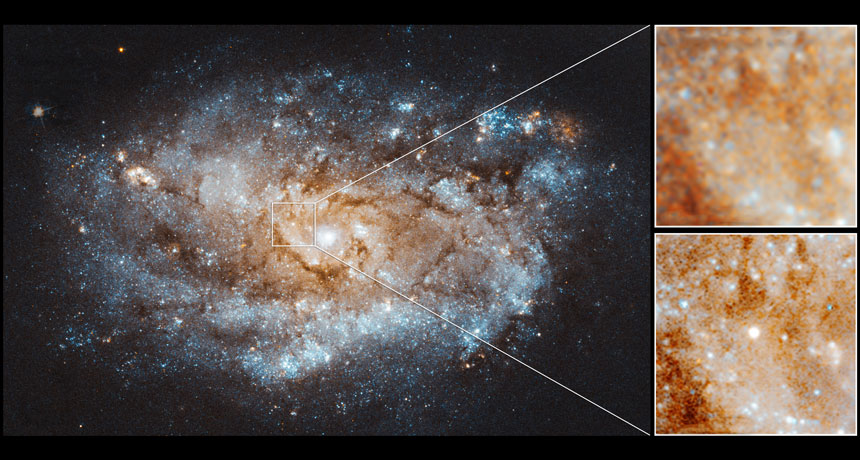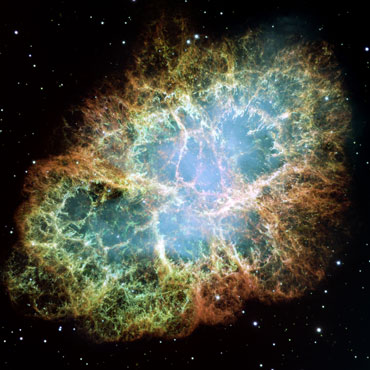Astronomers may have spotted the birth of a neutron star
Six years after a supernova exploded, scientists have found signs of a newborn pulsar

ON LIKE A LIGHT Astronomers spotted evidence of a neutron star’s birth after supernova 2012au exploded in the galaxy NGC 4790 (shown). The supernova was absent in a 2001 Hubble Space Telescope image of the galaxy (top panel), but visible as a bright dot in 2013 (bottom panel).
NASA, ESA and J. DePasquale/STScI
- More than 2 years ago
For the first time, astronomers may have watched a massive stellar explosion give rise in real time to a superdense dead star called a neutron star.
New observations of supernova 2012au show charged oxygen and sulfur atoms fleeing the scene of the explosion at 2,300 kilometers per second. That suggests the shells of gas surrounding the dense remains of the original star are being lit up from within by a pulsar, a type of fast-spinning, radiation-spewing neutron star, researchers report September 12 in the Astrophysical Journal Letters.
“It’s proof positive, a smoking gun for it,” says astrophysicist and study coauthor Dan Milisavljevic of Purdue University in West Lafayette, Ind. “We’ve seen this supernova from the explosion up until this transformation into the neutron star.” The find gives astronomers a chance to test theories about how supernovas and their aftermaths evolve in real time.
SN 2012au was spotted in 2012 in a galaxy about 77 million light-years away. The violent explosion marked the end of a massive star’s life, when the star could no longer fuse elements and produce enough energy to support its own weight (SN: 2/18/17, p. 20). The star’s core collapsed, producing a rebounding explosion of its outer layers of gas and, according to theory, leaving a dense neutron star as its final remains.
Milisavljevic and colleagues first monitored SN 2012au for a year following the explosion, and found that it faded more slowly than most supernovas of its kind, the team reported in 2013. That could have meant that a pulsar was contributing energy to the explosion, keeping the lights on longer.

Six years after the explosion, SN 2012au was still relatively bright. But the team saw no signs of hydrogen in the wavelengths of light around the supernova. Instead, the researchers found ionized oxygen and sulfur atoms making a quick getaway. Those heavier atoms would trail hydrogen as material leaves a supernova explosion, forming an inner shell of ejected gas. Seeing light from ionized oxygen and sulfur suggests that the shell is illuminated from within by a pulsar.
Astronomers have seen other pulsars lighting up their surroundings in our galaxy. The most famous one in the Milky Way is in the Crab Nebula, the remains of a supernova that went off in 1054 (SN: 6/4/11, p. 10). But if SN 2012au is doing the same thing, it would be the first time this phenomenon has been seen outside the Milky Way and so soon after the explosion, says astrophysicist Samar Safi-Harb of the University of Manitoba in Winnipeg, Canada, who was not involved in the new observations.
“We don’t know what happens between the explosion itself and those remnant stages,” she says. But if the findings prove true, “we have an example of how [a supernova remnant] manifests itself in those early stages, in this case six years post explosion.” It’s still possible something more exotic is happening in SN 2012au, she says. “Only time will tell.”
Milisavljevic and colleagues have predicted how the supernova’s light should change over the next few years if there really is a pulsar hiding in the star’s remnants, and hope to continue making follow-up observations.







